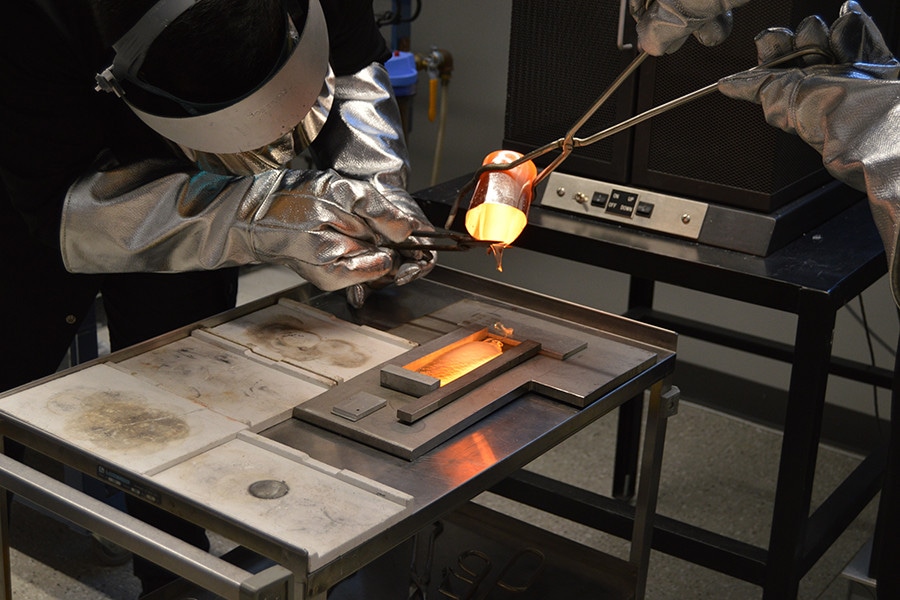Apr 4 2019
According to Penn State scientists, a new composition of germanosilicate glass formed by incorporating zinc oxide possesses properties good for lens applications. This marks the discovery of a novel glass group.
 Conghang Qu, undergraduate student in materials science and engineering at Penn State, trims glass from a crucible. (Image credit: Penn State University)
Conghang Qu, undergraduate student in materials science and engineering at Penn State, trims glass from a crucible. (Image credit: Penn State University)
The scientists have invented a new series of zinc germanosilicate glass possessing a high refractive index that is the same as that of pure germania glass. The samples also revealed good ultra-violet-shielding properties, high transparency, and good glass forming ability, making them ideal for lens applications. They published their findings in the latest issue of the Journal of Non-Crystalline Solids.
Germanosilicate glass is vital in the making of waveguides, optical amplifiers, and solid-state lasers.
The motivation for the study was the need for new glass compositions that have a high refractive index while still being processable at an industrial scale.
John Mauro, Professor of Materials Science and Engineering, Penn State University
The refractive index of glass defines its use.
"The benefit of a high refractive index is its capacity for designing low-thickness lenses," said Ye Luo, doctoral student in materials science and engineering.
In glass synthesis, however, attaining a high refractive index naturally has a few barriers. Lead oxide can achieve this, but it needs the use of poisonous raw materials. Non-lead constituents that trigger a high refractive index can make the glass a lot more hard to form, or susceptible to crystallization and, therefore, more opaque. By discovering the ideal balance of zinc oxide with the other constituents of the glass composition, the scientists avoided these problems.
Zinc oxide exhibited UV shielding properties in the research samples. This should not be shocking, Mauro said, since inorganic sunscreen is based on zinc oxide. With UV shielding, a zinc-oxide-containing glass could be used for daily applications such as eyeglasses or car windows.
The glass samples also displayed promising forming properties. As a "long glass," the new compositions can be created over a wider temperature range, rendering them much simpler to control during formation. This property, the resistance to crystallization, and the lower cost of zinc oxide than germania all make this new glass composition a feasible choice for manufacturing on a large scale, the scientists said.
A patent has been filled by the scientists for the zinc oxide-containing germanosilicate glass.
The research was sponsored by Penn State. Conghang Qu and Arshiya Bhadu, both undergraduate students in materials science and engineering at Penn State, also contributed to this research.